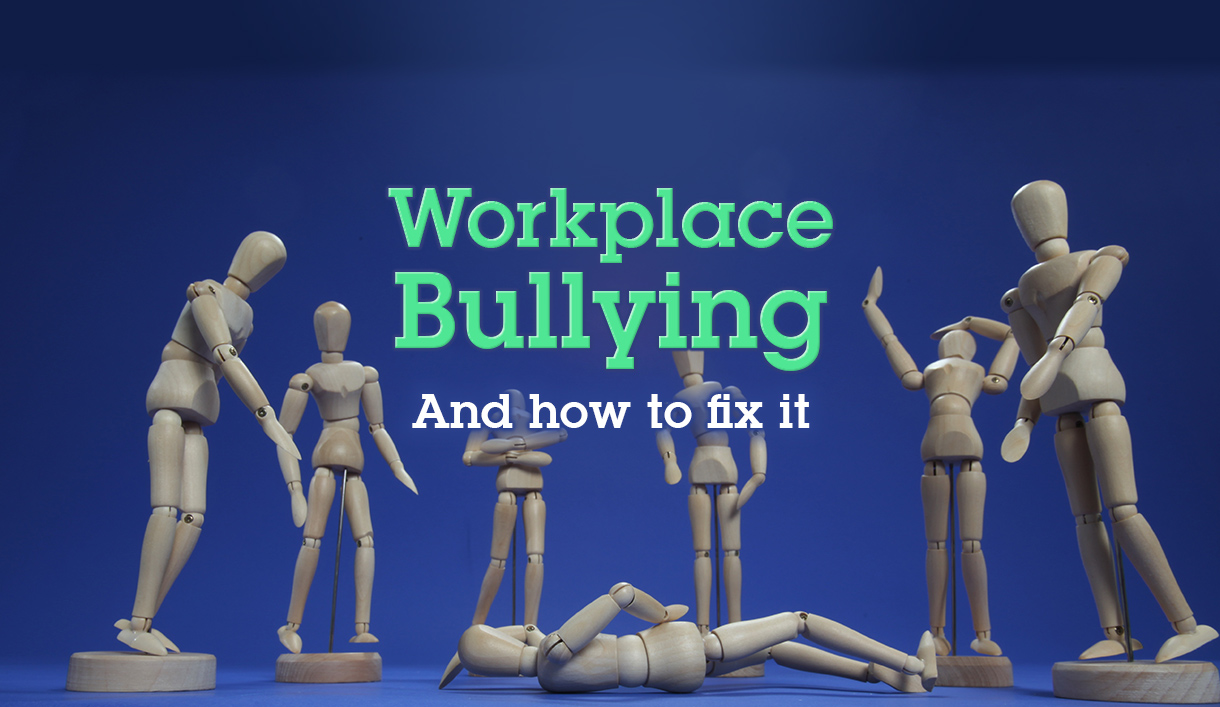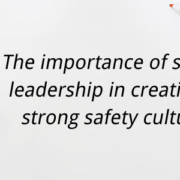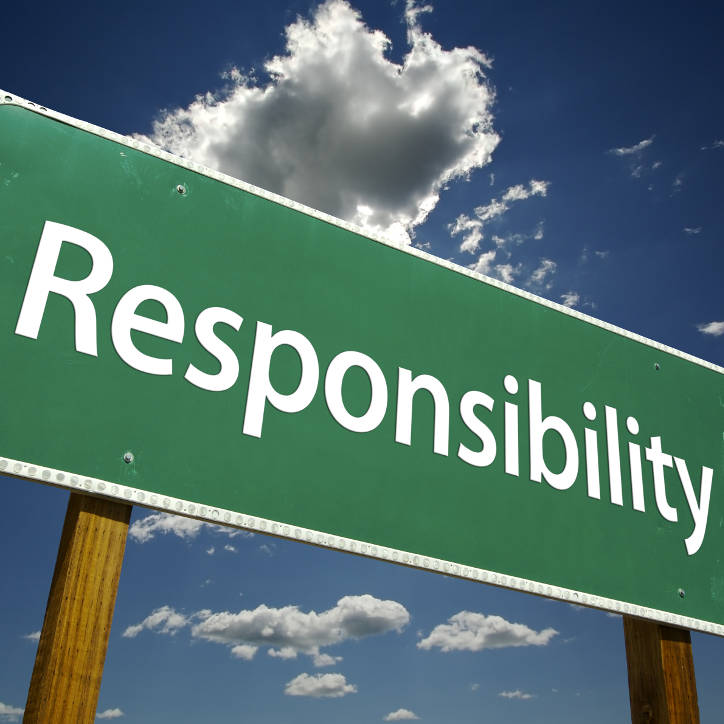Workplace Bullying
Always Choose Respect
For Anti-Bullying Week 2018 the Anti-Bullying Alliance focused on the theme of ‘choose respect’, and while this campaign is predominantly targeted at school children it seems no less relevant in relation to workplace bullying.
The very fact that workplace bullying exists at all is one most should find sobering. Many of us would rather believe that sustained mistreatment is typically linked to adolescence; a phase to be outgrown and left behind as we mature into adulthood. Sadly, this is simply not the case.
At the end of 2015, the Trades Union Congress (TUC) published UK research*1 suggesting 29% (nearly a third of those surveyed) have been bullied at work, with women being a particularly vulnerable group to it (34% vs 23% for men) and – perhaps most disturbingly – that 72% of this bullying is carried out by a manager.
Ironically, facing a workplace bullying situation can potentially be even tougher than a school one, due to reduced awareness and seemingly insurmountable power structures. As a result, victims can be left feeling almost completely helpless.
The bullied party may feel even more trapped due to their job circumstances. Management may be implicated, or the victim might feel there isn’t anyone who would support them speaking out. Backed into a corner they may think they have almost no options left, resolving to toughen up and survive. They may even begin blaming themselves for the toxic behaviour of the aggressor(s).
The hopelessness people believe they face in this situation is reflected by one other significant stat from the TUC survey; that 36% (about 1 in 3) people who report workplace bullying end up leaving their job because of it.
I’ve known plenty of people who’ve made this call after being bullied or harassed in the workplace and in all cases, it’s been to their disadvantage, having to scramble for new employment while the perpetrator avoids having to face up to their actions.
Put bluntly, this should not be the case. Victims should not be forced to abandon a job to end misbehaviour directed towards them, with the workplace losing talent and risking the likelihood of a perpetuated cycle of damaging bad behaviour.
Workplaces should always choose respect over toxicity, and a good starting point for this is knowing where the lines are and what to do when someone crosses them.
The difference between bullying and harassment
The UK Health and Safety Executive (HSE) defines bullying and harassment as ‘behaviour that makes someone feel intimidated or offended.’*2
While harassment is deemed unlawful under the 2010 Equality Act, bullying in a broader sense is not actually illegal. It might seem like splitting hairs, but recognising the distinction is an important starting point to identifying how severe a workplace situation is to plan a response.
So, what exactly is the difference between bullying and harassment?
Generalised bullying could include one or more of the following:
- Unfair or differing treatment that can’t be justified by specific workplace requirements, experience or role responsibilities.
- Regularly demeaning a staff member or purposefully undermining their confidence.
- Spreading unpleasant or humiliating rumours behind a staff member’s back.
- Denying opportunities to a staff member without good cause, particularly promotion and new training.
The boundaries on what constitutes fair treatment and what is specifically bullying can be slightly blurry, but as a rule looking at the cause for the above is a sensible way to determine whether treatment is unfair. If there isn’t an identifiable, practical reason for differing treatment beyond personal grudges or favouritism then the chances are it’s unjustified.
It’s worth considering that bullying has a variety vectors as well. It can occur through any of the following:
- Face-to-face interaction.
- Gestures and expressions.
- Letters and notes.
- Pranks and rigged situations.
- Phone calls.
- Emails.
- On social media networks such as Facebook, Twitter and Instagram.
Going beyond this, at what point does bullying become harassment and thus a legal issue in the UK? Put simply, this is when the discrimination can be explicitly connected to one of the following protected characteristics:
- Sex.
- Age.
- Disability or disabilities.
- Gender reassignment.
- Marriage or civil partnership status.
- Sexual orientation.
- Religious beliefs or lack thereof.
- Ethnicity/race.
- Pregnancy and maternity.
In its worst form harassment may also become physical or sexual, at which point, regardless of whether it is a pattern or an isolated incident, immediate action should be taken without delay. If a staff member lays hands on you without consent – regardless of position in the company – they are in violation of UK law.
Taking action against bullying
Taking action against bullying in the workplace once you’ve identified it’s occurring is vital. This might seem easier said than done – particularly if the bully or harasser is in a position of power – but trying to ignore the issue is only likely to normalise rather than reduce the behaviour in question.
Before we get into specific steps to take, it’s also worth emphasising the importance of staying calm. If you can possibly manage it don’t lash out in anger.
Besides the fact that provoking a violent reaction may be the bully’s intent, it’s likely to complicate matters making it harder for others to judge who is the aggressor and who is the victim. If bullying or harassment is in danger of overwhelming you and you’re seeing red; remember to focus on breathing for 10 seconds, think about the bigger picture and step out of the workplace until you can think clearly again.
Taking action against workplace bullying, consider working through the following points as required:
- Keep an incident diary until matters are resolved – Make an entry for every notable incident you experience that constitutes bullying, harassment or perceived motivation for either of latter. Be sure to include times, dates, locations and witnesses present where possible as well since this will provide further corroboration for your account of events if it is required later.
- Address the issue with the bully – This isn’t always possible for a variety of reasons but is worth a try if you’re confident enough. Just make sure you are calm when you approach them and maintain your composure, telling them that their behaviour is professionally unacceptable. A firm (and crucially non-violent) confrontation on the matter may be unexpected and cause them to back off when they realise that they are heading for trouble.
- Seek support from colleagues and friends – Bullying can make us feel isolated, so finding support is a reliable way to boost your confidence. Find people you can trust inside or outside of work, knowing someone has your back will make any ensuing action much easier.
- Take matters to your supervisor or a manager – As I mentioned near the start of this blog, there is a reasonable likelihood a manager is implicated, but otherwise go as far up the ladder as you need to, to find someone impartial and supportive. Employers are legally required to prevent harassment with reasonable steps (under the Equality Act in the UK*3) and it should be in the company interests to end bullying as well. Ideally, they will take matters further from here and weaken the bully’s position with an intervention.
- Go to your union or join one for support and guidance – if the last step doesn’t see management taking the issue seriously or an ineffectual response then going to your union (or joining one) is your next best bet. If there is a union representative where you work they should handle complaints informally and confidentially unless directed otherwise; offering advice, support and a discreet solution to the issue. Remember that you have the right to join a union and are legally protected from being discriminated against by your employer for doing so.
- Make a formal complaint – If all else fails and you decide to make a formal complaint through your company’s grievance procedure, make sure you read the related documentation thoroughly. Additionally, being in a union should offer you access to free legal advice; invite a representative or trustworthy witness along to any related meetings you have regarding the issue henceforth.
- Take legal action – If all the previous points fail to see any meaningful progress from the bully and/or your employer you can make a claim to an employment tribunal to make the case that matters have been handled unlawfully. Keep in mind that in the UK said claim must be made within 3 months of employment ending, while the Acas (Advisory, Conciliation and Arbitration Service) must also be informed before the claim is made. Typically, the case will argue for you receiving compensation, expenses, improving working conditions and/or reinstating you in a job.
Bullying and harassment harms the workplace
As with almost all misbehaviour within a company, bullying and harassment harms the workplace as a whole.
Even if you aren’t directly involved and turn a blind eye, a workplace which tolerates bullying is tolerating what will likely be the erosion of its own morale, values and integrity in the long-term. To say nothing of the bad PR a harassment story in the news can generate (as recent scandals in the public eye have shown).
If you become aware of a colleague being bullied, make sure they are aware of their basic rights and options. Additionally, consider alerting management to the issue; as previously mentioned they will almost certainly seek to rectify the issue as it could become a legal failing if they do not take action.
Choosing respect shouldn’t be so difficult and doing so guarantees us all better working lives.
Owen Roach
Marketing Assistant
SHEilds ltd
References
*1 https://www.tuc.org.uk/news/nearly-third-people-are-bullied-work-says-tuc








Leave a Reply
Want to join the discussion?Feel free to contribute!